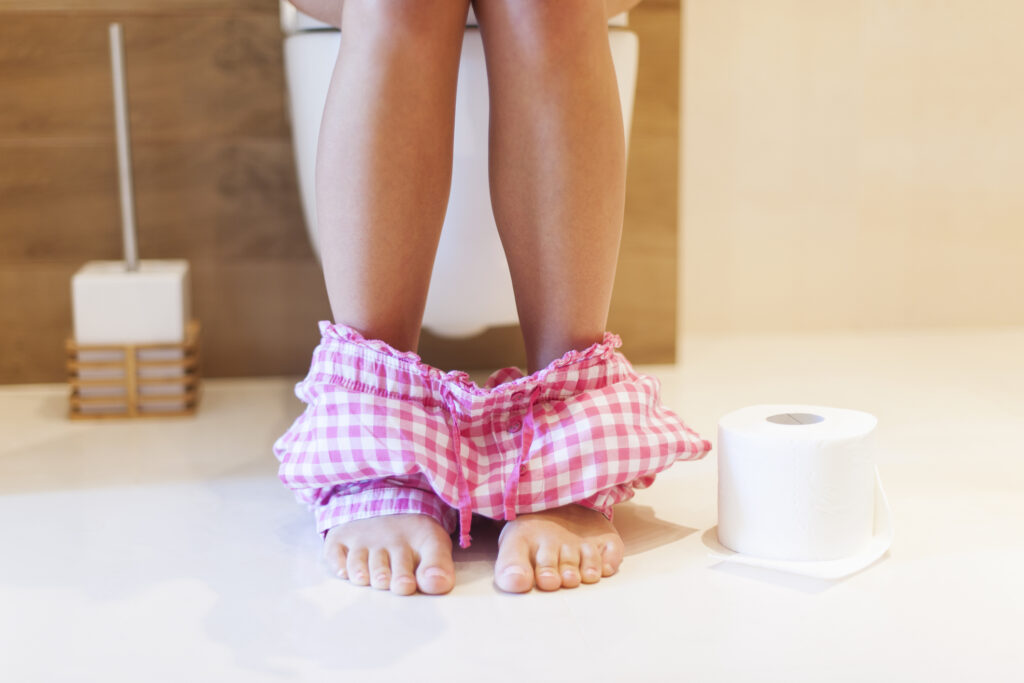A urinary tract infection (UTI) is a common condition among females. It develops when bacteria enter the urethra, the tube that drains urine from the bladder to outside the body. A UTI is sometimes called a “bladder infection,” because bacteria most often invade the bladder. Without treatment, a UTI can advance and seriously damage the kidneys.
Women get more UTIs than men—up to 30 times more often—simply because of difference in anatomy. The urethra in females is shorter than in males, so it’s easier for bacteria to get in. Also, the female urethra is located close to the anus, the primary source of the germ Escherichia coli (E.coli) that causes more than 90% of UTIs.
UTI symptoms you should know
During their lifetime, 50-60% of adult women will experience a urinary tract infection. Even with antibiotics, about 26% of these women will have another UTI within 6 months.
It’s important to recognize UTI symptoms in order to seek prompt treatment:
- Pain or burning when urinating
- Frequent urge to urinate without much urine coming out
- Pressure in the abdomen or stomach
- Foul odor of urine
- Urine appears cloudy or milky
- Blood in the urine (more common in younger women)
- Fatigue, weakness, or confusion (more common in older women)
M-M-M: When women are most susceptible to UTIs
Although it’s possible to develop a UTI at any life stage, there are three key times when the risk is higher. We call these “M-M-M: Menstruation, Motherhood, and Menopause.”
Menstruation: The years of high sexual activity, generally ages 18-39, often mark the first time a woman experiences a urinary tract infection. During sex, bacteria in the perineal area (urethra, vagina, and anus) can easily be pushed into the urethra and up to the bladder. The risk increases with a new sexual partner.
Diaphragms help prevent pregnancy, but put pressure on the urethra, making it difficult to empty the bladder and causing an overgrowth of harmful bacteria. It’s important to note that oral contraceptive (birth control) pills are not a risk for developing a UTI.
Motherhood: Pregnancy brings different causes for a UTI. First, the fluctuating hormones cause changes in both the urethra and its normal bacteria. Second, as pregnancy advances, uterine pressure may prevent the bladder from emptying. Either way, contact the obstetric team immediately when experiencing any symptoms of a UTI to begin safe antibiotic therapy.
An untreated UTI during pregnancy (although a UTI is usually painful and impossible to ignore) can result in a premature delivery, low birth weight, and pre-eclampsia, a dangerous high blood pressure condition that threatens both baby and mother.
Menopause: The drop in the hormone estrogen after periods stop (or if ovaries have been removed by surgery or with cancer treatment) can lead to an increase in UTIs. Estrogen loss causes thinner tissue in the vagina and urethra. The result? Dryness, irritation, and other factors resulting in UTIs.
The decrease in estrogen has a couple of consequences. When it decreases, so do the number of protective bacteria that normally thrive in the bladder and vagina. Also, there is less estrogen to keep muscles strong, including those surrounding the urethra. Bacteria can move more easily up to the bladder. And the bladder—which is a muscle—has a harder time emptying.
FemmePharma’s Mia Vita® Personal Lubricant & Moisturizer is FDA-cleared nonprescription relief from vaginal dryness, itching, burning, and discomfort during sex. It is made without hormones or harsh chemicals and is safe to use every day for optimal vaginal health. The pre-filled applicators are convenient and easy to use.
UTI treatment is the same for all
No matter the cause, UTI treatment is an antibiotic prescription. Relief comes within 1-2 days. But it’s essential to complete the entire course of antibiotics. Stopping too soon allows the infection to retreat and return.
Women who experience recurring infections (two or more UTIs within six months or three or more within a year) should work with their health care provider to determine possible causes and create a treatment plan.
How to prevent a UTI
Risk of developing a urinary tract infection can be lowered with some healthy practices:
- ALWAYS wipe from front to back.
- Don’t hold in urine for more than 3-4 hours.
- Urinate before and after sex.
- Drink 6-8 glasses of water every day.
- Wash the genital region every day with a clean washcloth.
- Choose underpants with a cotton crotch.
- Avoid douches and feminine hygiene sprays or powders.
- Take showers instead of baths
Sources:
Aggarwal N, Leslie S, Lotfollahzadeh S. Recurrent Urinary Tract Infections. Continuing Education Activity, StatPearls Publishing, National Library of Medicine, January 2024. Last updated 2 May 2024. Accessed online 11 December 2024.
Bladder Infection (Urinary Tract Infection—UTI) in Adults. National Institute of Diabetes and Digestive and Kidney Diseases. Last reviewed April 2024. Accessed online 11 December 2024.
Cichowski S. UTIs After Menopause: Why They’re Common and What to Do About Them. The American College of Obstetricians and Gynecologists. Published November 2023. Accessed online 12 December 2024.
Drysdale, D. Escherichia coli (E coli) Infections. Medscape. 15 October 2024. Accessed online 11 December 2024.
Medina M, Castillo-Pino E. An introduction to the epidemiology and burden of urinary tract infections. Therapeutic Advances in Urology, 2019 May 2. Accessed online at PubMed Central, 11 December 2024.
Recurrent UTI and Hormonal Birth Control. Agency for Healthcare Research and Quality, Effective Health Care. 20 September 2019. Accessed online 11 December 2024.
Urinary Tract Infections. Office on Women’s Health, U.S. Department of Health & Human Services. Last updated 22 February 2021. Accessed online 11 December 2024.
